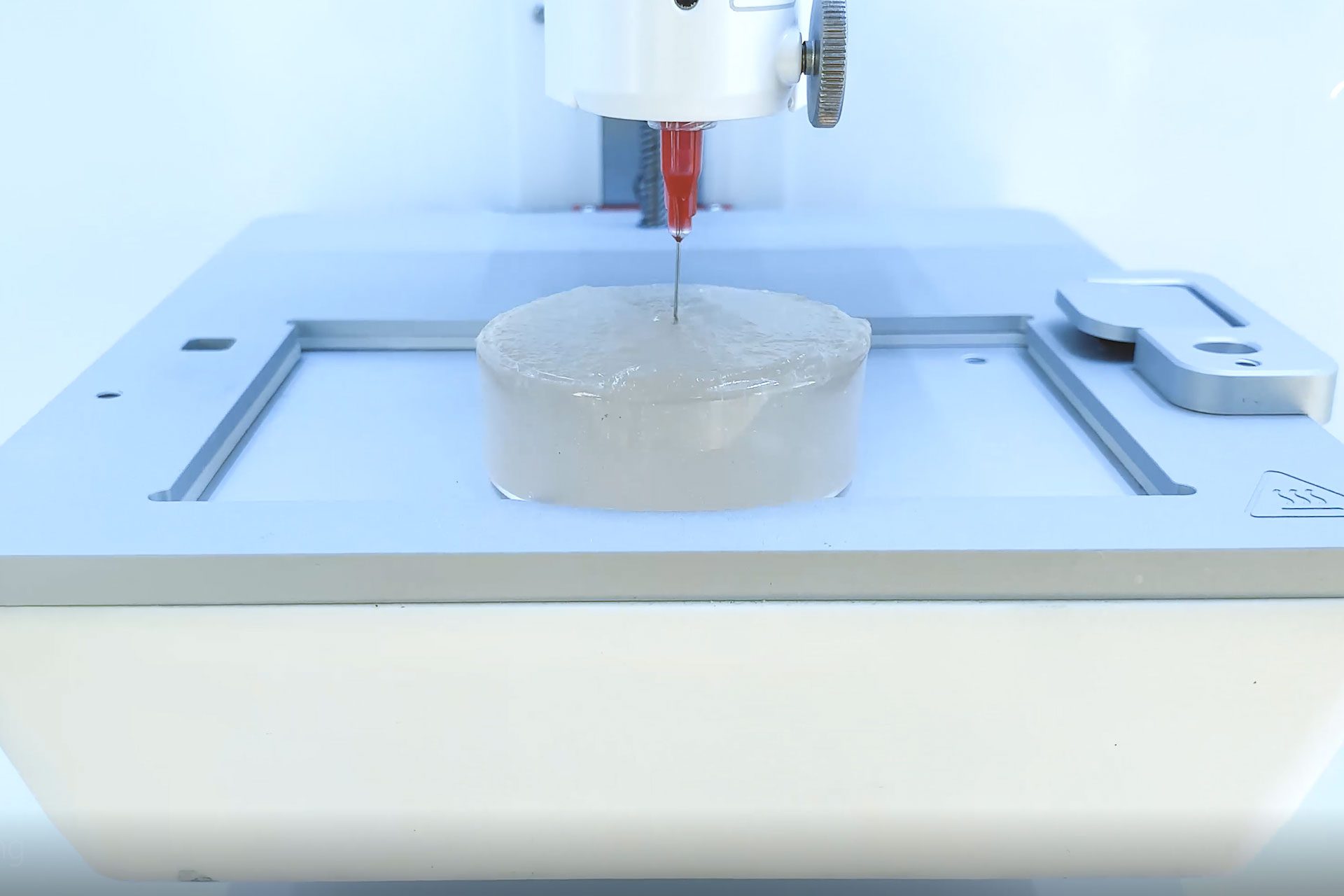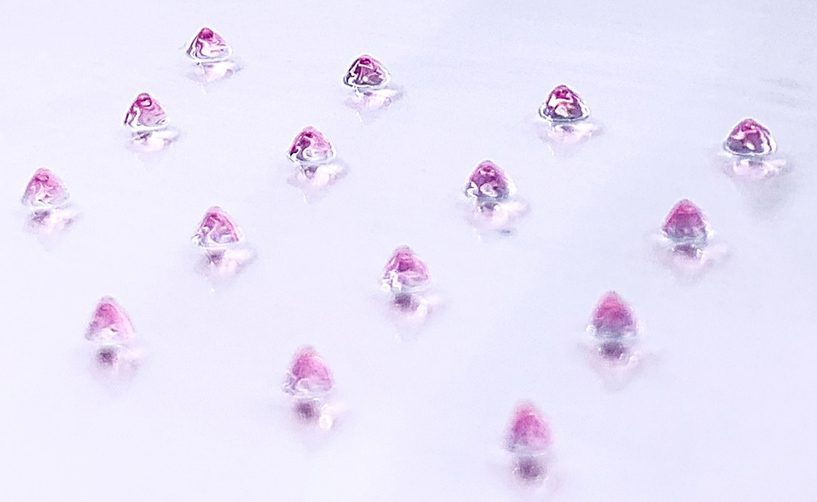3D Printed Organs:
How, Why & When
The Potential of Organ Printing
When talking about 3D printed organs, it is important to note that we humans are not yet at the stage where we can implant 3D printed hearts into our bodies. In this article, we will dive deeper into the topic and give a good view of what is to come.
A primary goal of bioprinting has been to solve the organ donor crisis by developing the possibility of printing living organs and other body parts. For future patients, this means a shorter wait for their organ transplant, as well as an organ tailored to their unique genetic and physiologic profile to reduce the risk of rejection. But the human body – and 3D printing organs – is a complex topic that will continue to require a lot of research for years and decades to come.
What is a 3D printed organ?
A 3D printed organ is the replica of a bodily tissue, crafted using a 3D bioprinter. The artificial organ or tissue is printed using a bioink. The bioink is developed to support cells in building the function and structure of the natural organ it is mimicking.
These 3D printed organs hold promise for various applications, including transplantation, disease modeling, drug testing, and personalized medicine. However, challenges remain in achieving full functionality, vascularization and addressing the regulatory landscape for clinical implementation.
When will 3D printed organs be available?
It is impossible to give a fully accurate estimate of how close humanity is to having 3D printed organs readily available for implantation, due to the complexity of our bodies. But 3D bioprinting technologies are constantly improving, and the researchers who use these technologies are inching ever closer to making this dream a reality.
In June 2022, 3DBio Therapeutics printed and implanted an ear using a patient’s own cells in a clinical trial. It is encouraging to already today see 3D bioprinting technologies being used to print implantable tissues.
In an interview with BBC Click in 2022, our own CSO Itedale Namro Redwan, PhD, was asked how far off we are from 3D printed organ implants:
“I think in 15 to 20 years we might be seeing this in clinical trials. Simpler organs could be seen very, very soon. But if we are talking about full, internal organs, that will take some time.”
In short, the field is moving in the right direction at the expected rate. With key advancements and breakthroughs, functioning printed organs can be here sooner than we think. It is important to note that printing one type of organ (say, a liver) does not mean we will be able to print another (say, a heart) right away. Each organ comes with its own complexities. But once a first full organ is successfully printed and implanted, we will be a lot closer to printing a second.
3D printed organs: explained simply
As mentioned in this article’s introduction, the ability to implant 3D printed organs will lower the wait time for organ transplants and reduce the risk of organ rejection. A 3D printed organ, in this context, is a collection of living cells printed in a three-dimensional geometry to replicate the functionality of an organ found in our bodies.
How is the organ 3D printed?
Since there are still many challenges to overcome before reaching clinical trials, we can’t give an exact answer to how an organ is printed. When it’s fully possible to print internal organs, we can assume a combination of modern, advanced and new techniques will be used.
Below, you will find a simplified three step description of the printing process of an organ meant for implantation. This description is likely to be accurate regardless of the specifics within each step. We wish we could give you a detailed explanation of each step, but that’s what researchers around the world are working on figuring out!
Step 1: Developing the 3D Model
To 3D print anything specific, you need a model. A generic model might be fine, but with imaging techniques (such as MRI and CTI scans) and advanced software, a specific 3D model that would fit the patient can be created.
By personalizing the 3D model and, ultimately, the finished printed organ, the chance for a successful implant increases.
Step 2: Harvesting the patient's cells and selecting the biomaterial
To further minimize the risk of organ rejection, using a patient’s own cells is beneficial. These cells are then grown and mixed with a bioink which has been specifically made to print the desired tissue.
To put it in other terms: In an ordinary printer, if you are looking to print black you need a black ink (or an imitation thereof). Similarly, if you are looking to 3D print a heart, you need a heart ink.
Step 3: Printing the organ model
After the 3D model has been finalized and the cells have been cultured and mixed, it is time to print the organ. The bioink, containing the patient’s cells, is printed following the 3D model design. It is also possible to add cells after the 3D construct has been printed.
The exact printing techniques and bioinks that will be used are what researchers around the world are working on. For example, this can include extrusion-based bioprinting which, simplified, extrudes the biomaterial into a shape (see our BIO X or BIO X6), or light-based bioprinting that uses light to shape the biomaterial, which typically allows for a high resolution (see our BIONOVA X and LUMEN X).
So, can we 3D print organs?
If we are talking about fully functioning internal organs, today the answer is no. We are confident that this no will, soon, turn to a yes. There are still a few hurdles for us to overcome.
These hurdles include creating a biomimetic vascularization of the printed organs and finding the right biomaterials for the bioinks used in the printing process.
Biomimetic vascularization
Biologically mimicking the complexities of a functional vascular network is not an easy task. As with all printing, 3D bioprinting comes with a resolution. This means creating a 3D bioprinter capable of printing the millimeter intricacies of an organ’s vascular network and the overall organ shape is a technological challenge. Today, vascular networks are often printed with either sacrificial bioinks – which are removed post printing – or by coaxial bioprinting to directly fabricate the vascular tubes.
Additionally, formulating the bioinks with specific bioactive materials which encourage vascularization behavior is an avenue to explore further. A combination of improvements in 3D bioprinting technology and biomaterial development is necessary to achieve proper vascularization for an organ, in vitro and in vivo.
In short, future biotechnological advancements will give researchers the tools necessary to continue exploring biomimetic vascularization for organs.
At CELLINK, we are working with both extrusion-based bioprinting and light-based bioprinting technologies. When it comes to printing implantable organ structures, it’s sensible to consider combining the two into one workflow. While extrusion-based printing provides great flexibility and is excellent for printing the general structure of the organ, it will be tougher to achieve the details necessary for a functioning vascular system. This is where light-based printing can come in. Light-based bioprinting is much more suitable for printing detailed features, like vascular networks, due to its high resolution and independence from sacrificial bioinks. To learn more about combining extrusion and light, read our technical note on the biofabrication of vascularized skin tissue models.
Biomaterial choices
An important facet of tissue engineering in general are the biomaterials. Each biomaterial used in a bioink will behave differently when interacting with the cells. Finding the right blend of these biomaterials is necessary to support cell adhesion and differentiation into the right cells.
While natural polymers, such as collagen, fibrin, gelatin and alginate show excellent biocompatibility which supports the cells to grow in the desired way, these polymers have limited printability. Therefore, synthetic polymers are often combined with natural biomaterials to increase printability. Composite bioinks akin to what we have just described are seen as promising candidates for the future of 3D bioprinting.
Exactly which biomaterials will be used in the first implanted full internal printed organ is impossible to say. What we can say with certainty is that the organ will be printed using multiple materials suited for the various components of that organ.
The future of organ transplants
In short, it begs repeating that 3D printed organs will benefit many organ recipients around the world. 3D printed internal organs are still years off from being ready for implantation.
But bioprinted organs, and how to print them, is something researchers across the world are working on every day.
As CELLINK and other bioprinting companies carry on pushing 3D printing technology forward, and researchers keep working on and improving organ and tissue models, we will continue seeing incremental improvements every year.
The future of medicine and organ transplants is coming closer one print at a time.














